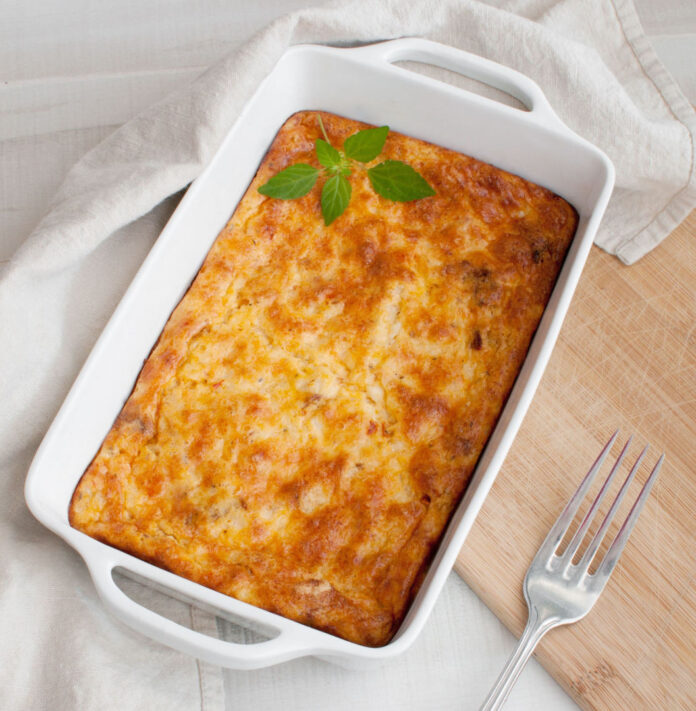
There is no real controversy about kugelis, and there is no real translation for the word. Everyone loves it, it‘s never on the menu in Lithuania, and kugel is a yiddish word for a kind of sweet or savory pudding of noodles or potatoes. I’ve also seen a recipe for carrot kugel. It’s been translated as potato pie, potato casserole, potato pudding (!) and other non-descript terms such as a potato “bake”, but none of them truly convey the “hygge” factor. It is home, it is comfort food, and if you use the wrong potatoes and not enough eggs – it will be grey and ugly.
Kugelis always comes up in conversations about favourite classic Lithuanian comfort foods, mostly in the famous trifecta of kugelis-kaldūnai-cepelinai. Kugelis wins in my kitchen for being the least labour-intensive, especially if you use a food processor. Yes you have to peel (but if health-wise, the thin skins of new or yellow potatoes all but disappear). I have never used the potato graters of old that take bits of knuckle with them, although some purists swear they’re best for the texture of kugelis or cepelinai. Kaldūnai (dumplings with meat filling or “pierogies” as they’re widely known) in Lithuanian cuisine are usually made not with a potato filling, but with meat or sweet cottage cheese, and I do remember my mother making them with blueberries. Those were called šaltanosiai, or cold noses, because the blueberries would colour the whole dumpling blue. Cepelinai, or zeps as we fondly call them, are a whole other chapter.
As to kugelis, I have a warm memory of an aunt whose kugelis was almost a souffle. Her trick was using a lot of eggs. If you make kugelis, you probably have your own tricks and traditions. Some cooks use cream (we use evaporated milk). It really doesn’t matter, but kugelis is ideally light and fluffy. When the potatoes are grated too finely, i.e., overprocessed, the baked interior can become too glossy. Of course some kugelis is better than no kugelis. As long as it’s not grey and thin: this can happen from certain potatoes, possibly old winter ones. It may be that russets are best, and an experiment will have to be launched to find out, but it’s safe to say that red-skinned potatoes are too watery.
The only argument that comes up in kugelis consumption is “who gets the corner?” and “is there more sour cream?”. To defuse the first argument, I have taken to baking the kugelis in square muffin pans, so that serving is easier and there is no fighting over the yummy crusty corners.
There may be as many differences of opinion about the “best” recipe for kugelis as there are cooks, but this is the one that was handed down to me.
First, dice your bacon (a pound is generous) and fry it slowly with a large chopped onion in a frying pan. Once lightly browned, add a can of evaporated milk (or cream) and scald it (bring the mixture to a boil), then turn off the heat. Meanwhile, for a 9×13” baking pan, I use about 8-12 potatoes, peeled, grated and then chopped (keeping an eye on the texture) in a food processor. This will mean filling the bowl of the food processor twice for each blade. Beat 4 to 6 eggs in the processor with the same blade, add to the mixing bowl with the potato mixture. Add about half a cup of flour (two Mom’s spoonfuls), a few teaspoons (Mom’s handfuls) of salt and the bacon mxiture. Combine and pour into the buttered baking pan, dot the top with butter and bake at 375o for one hour and 15 minutes. It should rest for 10 minutes to make cutting easier. Be sure to have enough sour cream on hand, or you will have an insurrection at your table! R.





























